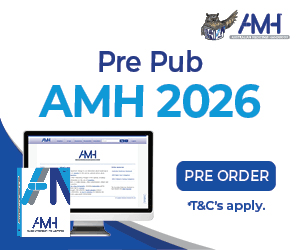In Australia, just under 300,000 people live with chronic hepatitis B or hepatitis C, liver infections caused by the hepatitis B and C viruses.1 If the infections become chronic, they may cause liver disease and liver cancer, which has the fastest increasing mortality rate in Australia compared to other cancers.2
Hepatitis B and C are often referred to as ‘silent killers’, due to the slow and asymptomatic disease progression, and are an overlooked public health challenge.
The burden of these infections falls hardest on marginalised and underserved communities: people from migrant and refugee backgrounds, Aboriginal and Torres Strait Islander people, people in prison settings, and those who currently or previously injected drugs.3 These communities face systemic barriers to accessing health care and commonly report adverse exchanges with health services, leading to prolonged suffering, delayed treatment, and ill health.4
As an educator, I use my platform not only to build clinical confidence but to emphasise that hepatitis B and C are not just liver issues, they are issues of equity and social justice. In 2016, Australia became one of the first countries in the world to commit to the elimination of viral hepatitis as a public health threat by 2030.1 Elimination targets include increasing diagnosis, improving engagement in care and treatment rates for affected communities, and reducing hepatitis-related mortality.1 This article highlights that nurses and midwives play a critical, yet underutilised, role in making hepatitis B and C elimination a reality.
The Public Health Picture
In 2023, an estimated 220,000 people in Australia were living with chronic hepatitis B.5 Globally, hepatitis B is most often transmitted from mother to child during birth. It is spread through contact with blood and body fluids, which can occur through sexual contact, unsafe injections, unscreened blood transfusions, or sharing of injecting equipment.6 More than 70% of people living with hepatitis B in Australia are from migrant or refugee backgrounds. Aboriginal and Torres Strait Islander people are also disproportionately affected by hepatitis B.3
While hepatitis B is vaccine-preventable and manageable with monitoring and medication, engagement in health care remains poor. Alarmingly, 31% of people living with hepatitis B remain undiagnosed.5 Of those diagnosed, many face ongoing barriers to accessing care or understanding the importance of monitoring and treatment. As a result, only 24% of people with chronic hepatitis B are receiving regular care.5
Hepatitis C affects around 69,000 Australians and primarily impacts people who inject drugs3. Unlike hepatitis B, hepatitis C can be cured. Since 2016, more than 100,000 Australians have been successfully treated and cured with direct-acting antivirals (DAAs). DAAs are safe, all oral medications that eliminate the virus in 98% of people after 8-12 weeks of treatment.1 Despite this, hepatitis C elimination targets are slipping. Reaching priority populations remains challenging due to stigma, drug criminalisation, housing insecurity, and health system gaps.4
But statistics only tell part of the story. Hepatitis B and C are deeply personal conditions, often carried in silence by people who may not even know they are infected. Many live with anxiety, uncertain futures, and/or shame. For culturally and linguistically diverse communities, hepatitis B is often referred to as a ‘family disease’, passed silently between generations. People born overseas face broader challenges such as navigating the complex Australian healthcare system, difficulty accessing education, employment or housing, and a lack of social connectedness that compound health inequities.
For people living with or at risk of hepatitis C, particularly those who use drugs, stigma is pervasive. Health services may be experienced as inflexible, unwelcoming, or unaffordable. Many report feeling dehumanised when trying to access care.4
These aren’t just abstract problems, they’re personal, painful, and ongoing.
For example, Sue was called by the dental clinic and informed she had been moved from first on the list to last on the day, with the receptionist coolly stating this was “clinic policy for infection control.”
Matt, who was recently removed from a surgery waitlist altogether at a busy Melbourne hospital, was told to rebook only after completing hepatitis C treatment. No referral or follow-up support was provided.
In one case, an emergency department doctor expressed surprise when Tom declined an 8-week treatment course that would cure his hepatitis C. Tom later explained to his trusted alcohol and other drug nurse practitioner that 15 years ago, while in prison, he was held down three times a week for six months to receive interferon injections he never consented to, medication that made him sicker than the virus itself.
Stigma also seeps into assumptions. A friend and colleague working in hepatitis C advocacy was congratulated by a GP on having a job, with the doctor assuming because she uses drugs that she wouldn’t be employed.
These experiences show how deep-rooted and damaging stigma and discrimination can be, both systemically and interpersonally. They erode trust, discourage engagement in care, and make people feel unsafe in health settings.
The Role of Nurses and Midwives
Nurses and midwives are uniquely positioned to change this trajectory. Nurses and midwives care for patients holistically – not as a collection of diseases or symptoms, but as whole people shaped by their lived experience. We also act as trusted advocates, ensuring our patient’s wishes and best interests are upheld, their voices are heard, and their dignity is maintained throughout their healthcare journey.
It needs to be acknowledged that nurses and midwives face challenges in providing holistic hepatitis care, usually unintentionally. Time pressures, high workloads, limited training on viral hepatitis, and a lack of confidence can all act as barriers.7 That’s why continued education, support, and systemic resourcing are essential. As an educator, one of my goals is to empower nurses and midwives with the tools they need to feel capable and confident to care for people with hepatitis B and/or C.
The good news is, you don’t need to be a specialist to make a meaningful difference. Nurses and midwives already have the skills to raise awareness, guide patients, and support care across all settings. In clinics, hospital wards, emergency departments, community health centres, and remote area posts, we are often the first point of meaningful contact for people affected by hepatitis.
For example, in maternity care, midwives may be the first to identify a pregnant person’s hepatitis B or C status and help prevent mother-to-child transmission, including through promoting the birth dose of the hepatitis B vaccination. Maternal and child health nurses support new parents to continue the hepatitis B vaccine schedule. In primary health settings, nurses frequently provide screening, vaccinations, treatment support, and referrals to local services. In emergency departments, we can offer opportunistic testing and link clients to social or harm reduction services. In remote clinics, particularly in Aboriginal and Torres Strait Islander communities, nurses play a vital role in closing the gap.
Perhaps most importantly, nurses and midwives are in a powerful position to challenge stigma, the biggest barrier to achieving hepatitis elimination. We must refrain from making assumptions, ensure our care is welcoming, respectful and non-judgemental, and normalise difficult conversations. This was summed up powerfully by Peta Gava, a Lived Experience Peer Worker at Peer Based Harm Reduction WA, who spoke at the 15th Australasian Viral Hepatitis Conference (6–8 August 2025, Melbourne): “When people have experienced healthcare that is respectful, affordable, and accessible, they remain engaged and present – not just in times of crisis”.8
Hepatitis B and C may be silent, but as nurses and midwives, we cannot afford to be. Your voice matters. We are advocates, educators, and healers. Voices for those too often unheard. Every test you offer, every vaccine you administer, every moment of compassionate, non-judgemental care contributes to better outcomes.
The type of care you provide can be the difference between someone seeking help or staying silent. As nurses and midwives, we are not just witnesses to health inequity. We are agents of change.
Let’s rise to this challenge.
References
1 Department of Health and Aged Care. (2023). National Hepatitis B and C Strategies 2023–2030. Australian Government. https://www.health.gov.au
2 AIHW. (2022). Cancer in Australia 2022. Australian Institute of Health and Welfare. https://www.aihw.gov.au/reports/cancer/cancer-in-australia-2022
3 Kirby Institute. (2022). National surveillance report on blood-borne viruses and STIs in Australia 2022. UNSW Sydney. https://kirby.unsw.edu.au
4 Burnet Institute. (2021). Stigma and viral hepatitis in Australia. https://www.burnet.edu.au
5 MacLachlan, J., Mondel, T., Purcell, D., & Cowie, B. (2025). Hepatitis B in Australia: Monitoring and surveillance report 2023. Doherty Institute.
6 World Health Organization (WHO). (2023). Hepatitis B and C: Key facts. https://www.who.int
7 Wallace, J., Scott, N., Draper, B., & Pedrana, A. (2022). Barriers and facilitators to nurse-led hepatitis care: A review. Australian Journal of Primary Health, 28(3), 210–218.
8 Gava, P. (2025, August 6–8). The elimination of hepatitis C “by 2030” is a sector goal, not a community one. [Conference presentation]. 15th Australasian Viral Hepatitis Conference, Melbourne, Australia.
Author
Mieken Grant is a Victorian Viral Hepatitis Educator | Clinical Nurse Consultant at St Vincent’s in Melbourne








